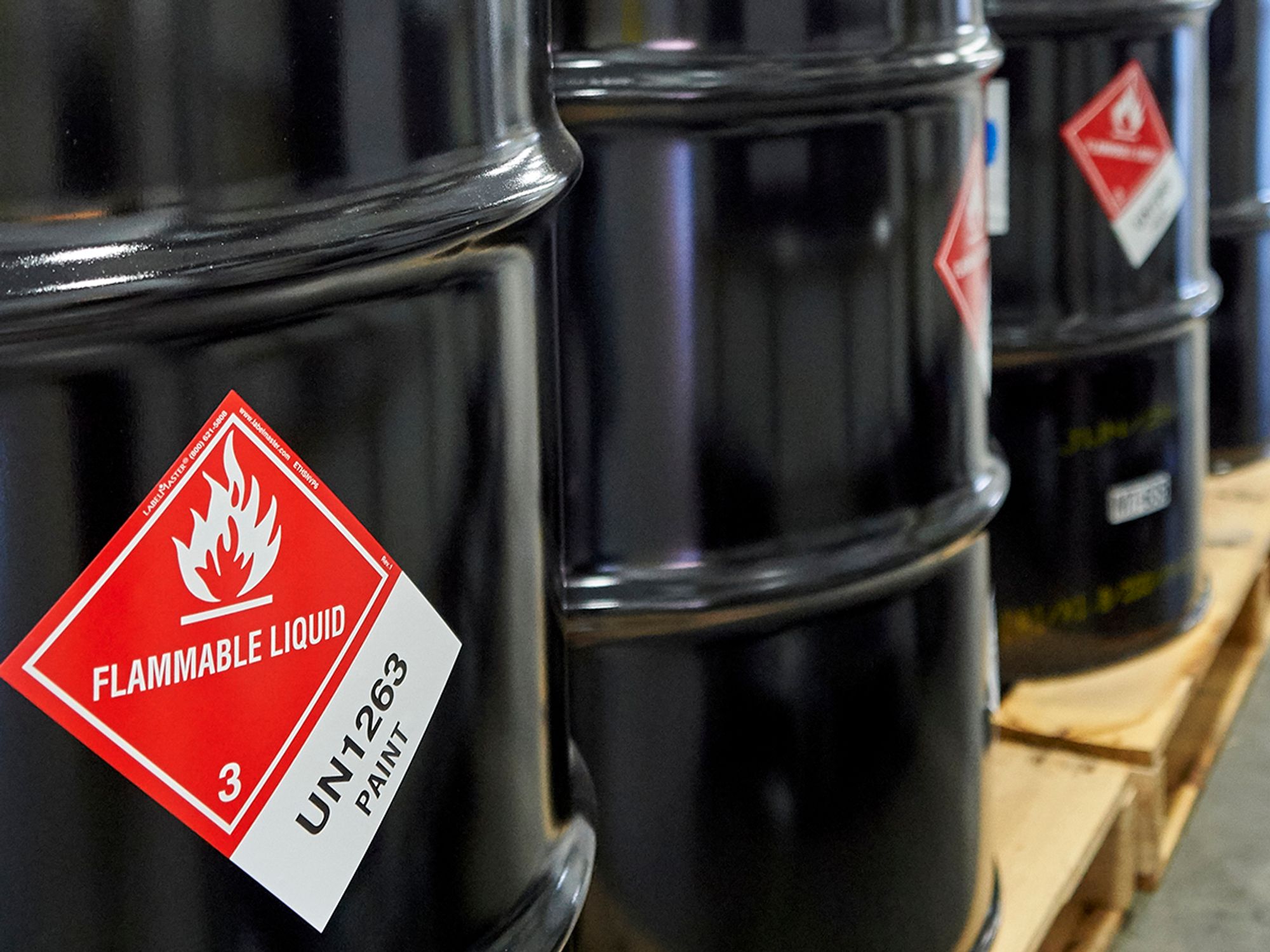InstituteSafety & HealthGeneral Industry SafetyFlammable LiquidsHazardous Materials Safety - OSHAEnglishAnalysisFocus AreaCompliance and Exceptions (Level 2)USA
Key definitions: Flammable liquids
['Hazardous Materials Safety - OSHA']

- Familiarization with key terms associated with flammable liquids can help employers and employees avoid associated hazards.
It is important to recognize and be familiar with key terms and definitions related to flammable liquids so that potential hazards are understandable and clear.
- Aerosol: A material which is dispensed from its container as a mist, spray, or foam by a propellant under pressure.
- Approved: Unless otherwise indicated, approved or listed by a nationally recognized testing laboratory.
- Boiling point: The boiling point of a liquid at a pressure of 14.7 pounds per square inch absolute (p.s.i.a.) (760 mm.).
- Fire area: meansA separate area of a building constructed to have a fire resistance of at least 1 hour; communicating openings are properly protected by an assembly with a fire resistance rating of at least 1 hour.
- Flammable liquid: means anyAny liquid having a flashpoint at or below 199.4 °F (93 °C). Flammable liquids are divided into “categories” (they used to be divided into “classes,” but OSHA the Occupational Safety and Health Administration (OSHA) revised the standard in May 2012). The categories are:
- Category 1 - includes liquids having flashpoints below 73.4 °F (23 °C) and having a boiling point at or below 95 °F (35 °C).
- Category 2 - includes liquids having flashpoints below 73.4 °F (23 °C) and having a boiling point above 95 °F (35 °C).
- Category 3 - includes liquids having flashpoints at or above 73.4 °F (23 °C) and at or below 140 °F (60 °C). When a Category 3 liquid with a flashpoint at or above 100 °F (37.8 °C) is heated for use to within 30 °F (16.7 °C) of its flashpoint, it must be handled in accordance with the requirements for a Category 3 liquid with a flashpoint below 100 °F (37.8 °C).
- Category 4 - includes liquids having flashpoints above 140 °F (60 °C) and at or below 199.4 °F (93 °C). When a Category 4 flammable liquid is heated for use to within 30 °F (16.7 °C) of its flashpoint, it must be handled in accordance with the requirements for a Category 3 liquid with a flashpoint at or above 100 °F (37.8 °C).
- When liquid with a flashpoint greater than 199.4 °F (93 °C) is heated for use to within 30 °F (16.7 °C) of its flashpoint, it must be handled in accordance with the requirements for a Category 4 flammable liquid.
- Flash point: is theThe lowest temperature at which the vapor of a substance will catch on fire. This measure provides an indication of how flammable a substance is.
- Portable tank: shall mean a A closed container having a liquid capacity over 60 U.S. gallons and not intended for fixed installation.
- Safety can: anAn approved container, of not more than 5 gallons capacity, having a spring-closing lid and spout cover and sothat is designed to that it will safely relieve internal pressure when subjected to fire exposure.
- Vapor pressure: shall mean theThe pressure, measured in pounds per square inch (absolute [p.s.i.a]) exerted by a volatile liquid as determined by the “Standard Method of Test for Vapor Pressure of Petroleum Products (Reid Method),” American Society for Testing and Materials (ASTM) D323-68, which is incorporated by reference as specified in Sec. 1910.6.
- Ventilation: as specified in this section is Necessary for the prevention of fire and explosion. It is considered adequate if it is sufficient to prevent accumulation of significant quantities of vapor-air mixtures in concentration over one-fourth of the lower flammable limit.
